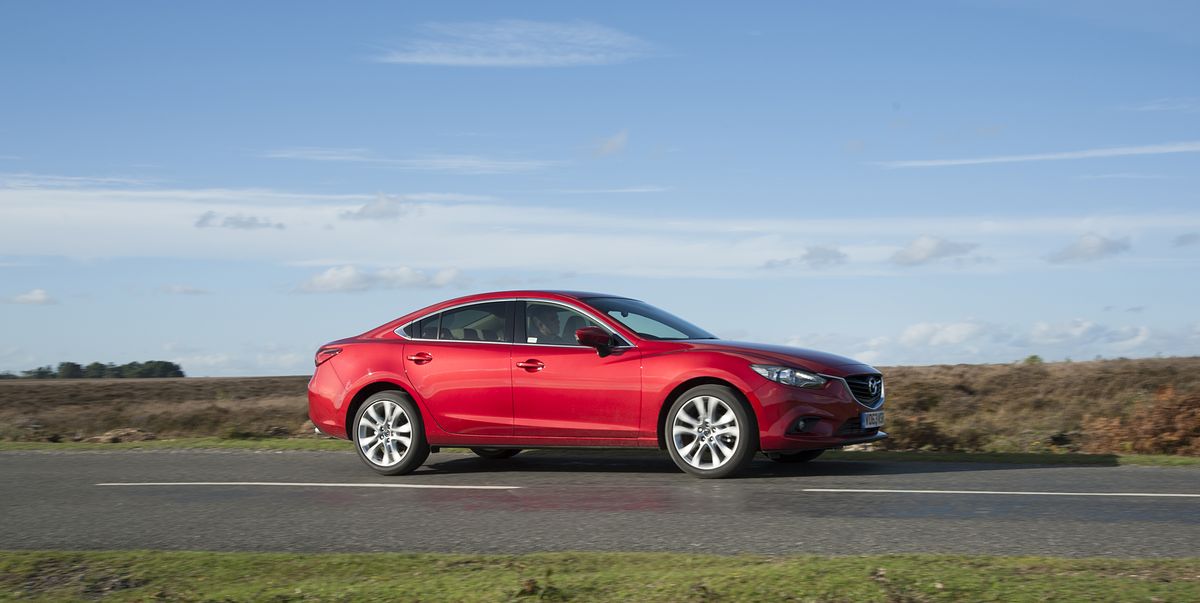
If you’re thinking about leasing a car, you might hear the term residual value come up a few times. But what is residual value, and why is it so important? Simply put, the residual value or salvageable value in a lease contract is the anticipated value of the vehicle at the end of the lease period, and lessors use it to set your monthly lease payments. Should you decide to purchase a leased car, the price you pay is the vehicle’s residual value, plus any fees you must pay.
In the market for a new car? Compare auto loans to find one that works for you
This anticipated or estimated value can be crucial if you want to determine the monthly payment you’ll have to make on your lease and get the best deal possible. Here’s all you need to know about residual values, including how you can use them to save money.
What Is the Residual Value of a Vehicle?
A vehicle’s residual value is its total value at the end of the lease or the amount you’ll pay to purchase it at the conclusion of its lease term. Leasing a car differs from renting one in that your monthly payments go toward the cost of vehicle depreciation and the lease term is typically longer than a rental. Choosing to lease can be best if you want to save up and buy the vehicle at the end of the lease.
The salvageable or residual value is similar to a car’s resale value, which is a car’s value after depreciation or an asset’s decrease in value over time. The leasing company or car dealership generally sets the residual value on a vehicle and it doesn’t change, while a vehicle’s resale value can change frequently based on market conditions. When assessing a car’s resale value, factors such as the time of year typically come into play.
What Factors Determine a Car’s Residual Value?
Residual value is a predetermined figure, meaning leasing companies and dealerships calculate it before you sign the lease contract. A higher residual value means the company expects the car to hold its value well and undergo less depreciation over the lease term. This can result in lower monthly lease payments. A car’s residual value is calculated based on several factors, including:
Reliability
When determining the residual value of a car, lessors may use reliability ratings to determine how well the vehicle functions over time. Higher ratings typically mean the vehicle has a lower risk of malfunctioning and needing costly repairs. Lower ratings can mean the vehicle has a greater risk of needing repairs. Newer vehicles tend to be more reliable because they have updated features and lower mileage.
Resale Value
Lessors might also use the car’s resale value to determine its residual value. Cars with higher resale values might also have higher residual values because they experience less depreciation. It’s possible to calculate a car’s resale value by using an online car price guide or having a dealership assess it for you. Past models might also offer insight into a vehicle’s total resale value.
Economic Conditions
Economic conditions can change quickly, and in strong periods of growth, a car’s residual value might increase slightly. During recessions, when fewer people are purchasing vehicles, it might decrease. Changing economic conditions can make purchasing a leased car over a new one more appealing for many people, which could significantly affect a car’s residual value as demand rises. Because a car is a fixed asset, certain economic conditions, including increased gas prices, can adversely affect its value.
How to Calculate Residual Value
Understanding how to calculate residual value can be important if you want to determine your monthly payments on a car lease and avoid paying more than you can afford. You might recognize that the longer you drive a car, the more it depreciates, but if you want to evaluate its exact residual value, you’ll need to know the vehicle manufacturer’s suggested retail price (MSRP) and multiply it by the residual value percentage rate. For example, if the vehicle you’re leasing has an MSRP of $30,000 and a rate of 50 percent, the residual would be $15,000.
The residual value percentage rate represents the amount the lessor expects the vehicle to be worth at the end of the lease. Most vehicles are about 50 to 60 percent of their original MSRPs at the end of the lease term. Residual value is necessary for calculating depreciation and amortization. The amortization of a leased car refers to the total amount you pay to finance it, minus its residual value. Amortization is often useful for accounting.
The simplest method for determining the residual value percentage rate is to check the lease agreement. If the agreement doesn’t include this figure, you can ask the lessor to provide it. Older cars with lower resale values might not have a residual value calculation. Lessors calculate residual values using many factors, typically beginning with the vehicle’s market value for the term and mileage required, but the calculation can get complex quickly. Assuming a vehicle has no residual value can simplify further calculations.
Lessors might also compare the value of a similar asset to the car they’re leasing. In large markets, similar models often form the basis for residual value calculations. Some leasing companies might also have policies requiring the residual values for a specific asset class to be the same. Because this approach can result in a residual value that’s higher than the fair market value, most lessors are careful about making policy decisions.
Residual Value vs. Lease Buyout
A lease buyout allows you to purchase a vehicle when the lease ends. Some lease agreements have a lease buyout baked in, making it easier for you to purchase the vehicle even after the term ends. The price you pay depends on the vehicle’s residual value. When buying out a car lease, it’s important to ensure the asset’s residual value is lower than the market value. If the car is worth more than the residual value, a buyout can be a good idea. If not, it might be better to hold off.
You’ll get to take home the car at the end of the lease period if you decide to buy. A car can be a valuable asset, and once it’s finished its useful life, you can resell it or trade it in for a new vehicle. A vehicle’s useful life can vary, but many leased vehicles last a long time. The decision to buy your leased vehicle after it’s depreciated depends on your budget and needs.
The Effects of Residual Value
How residual value affects your lease typically depends on the type of lease you have. As a lessee, it’s important to understand how residual value works to avoid having to pay other costs at the end of the lease period. With a close-end lease, the lessee is responsible for the car’s remaining value after depreciation. If the value of the car is less than the residual value when the lease period ends, you can turn the car in without paying additional fees.
In an open-end lease, if the value of the car is less than the salvageable value, the lessee might need to pay for the difference between the salvageable value and the car’s fair market value. The difference can be significant, depending on the level of depreciation that occurred. Various industries calculate the residual value of tangible assets differently, but most, including the car leasing industry, use these two primary lease types.
Both types of leases calculate an amount of projected depreciation, which becomes the basis for calculating your total monthly payment. Once you determine this payment, you can compare your options to choose the best one.
The Importance of Residual Value
By making it easier to calculate amortization and deprecation, residual value can help car leasing companies and dealerships determine the total sum to use in their depreciation schedules. Car depreciation affects every vehicle, and it forms the basis for countless important decisions companies make. Most companies choose to calculate the residual value at the end of the year and record any changes accordingly.
They also use it to determine the amount a lessee will pay for the vehicle. This value, along with the interest and tax rate, allows them to charge lessees a fair price for driving a vehicle over a certain period. Knowing a vehicle’s residual value allows lessees to determine how much they’ll need to pay before they formally sign the contract. Some companies that own several fixed assets, including vehicles, might also have residual value insurance to reduce asset-value risk by ensuring the asset won’t be worth less than a specified amount by a certain date.
Leasing Considerations
Choosing to lease a car or another asset can be a big decision. If you prefer driving a new car every few years or you’re not sure whether you want to buy a certain model, leasing could be a great option. When deciding to lease, see if your preferred manufacturer offers any leasing specials to help lower costs. These specials can vary, depending on the make and model.
Now that you know more about residual value and how to calculate it, you can focus on finding the right leased vehicle for your budget and lifestyle. While you lease, it’s important to ensure you keep the vehicle in great condition to maintain its residual value. It also never hurts to try to negotiate other lease terms to get an even better deal.
Finance & Insurance Editor
Elizabeth Rivelli is a freelance writer with more than three years of experience covering personal finance and insurance. She has extensive knowledge of various insurance lines, including car insurance and property insurance. Her byline has appeared in dozens of online finance publications, like The Balance, Investopedia, Reviews.com, Forbes, and Bankrate.
#Residual #Calculate
Source link





